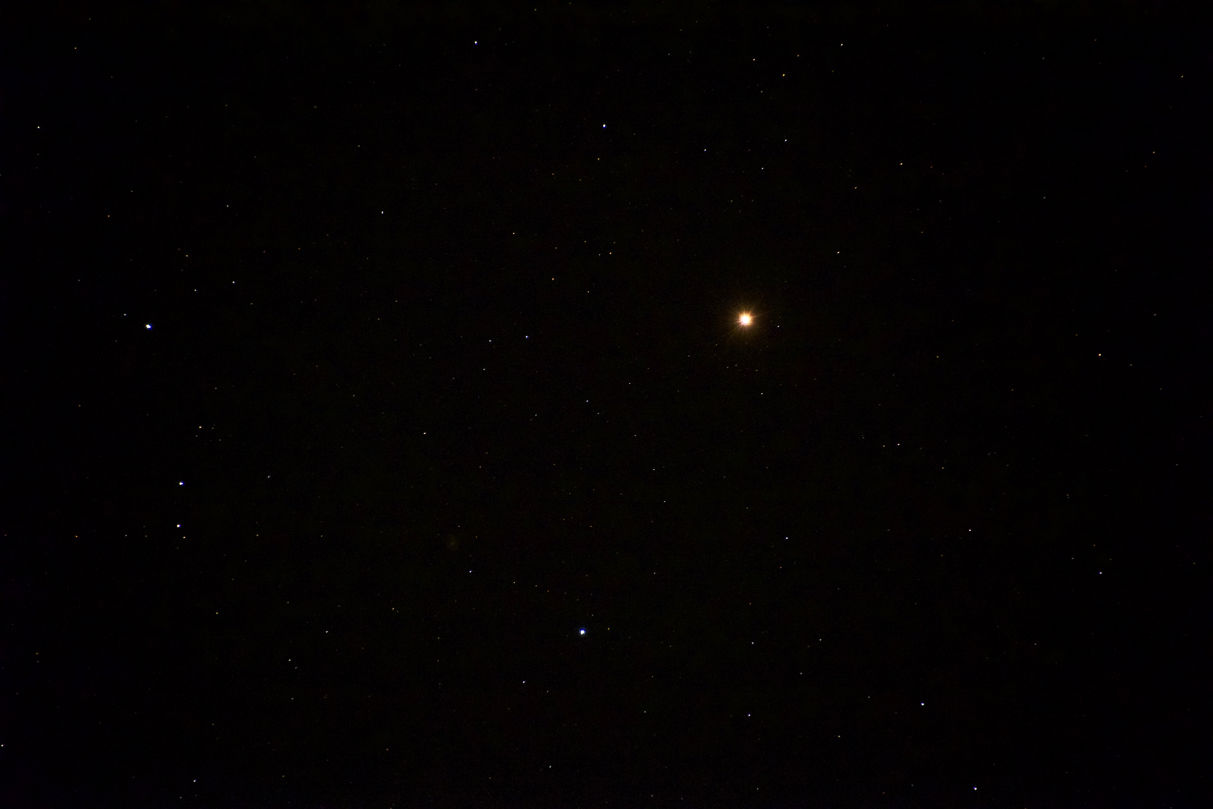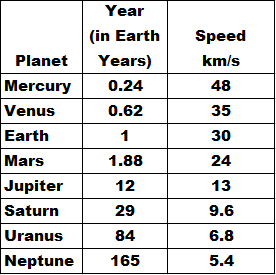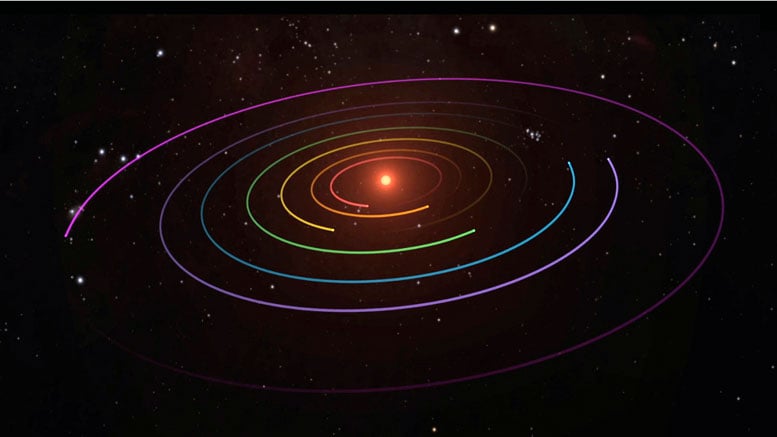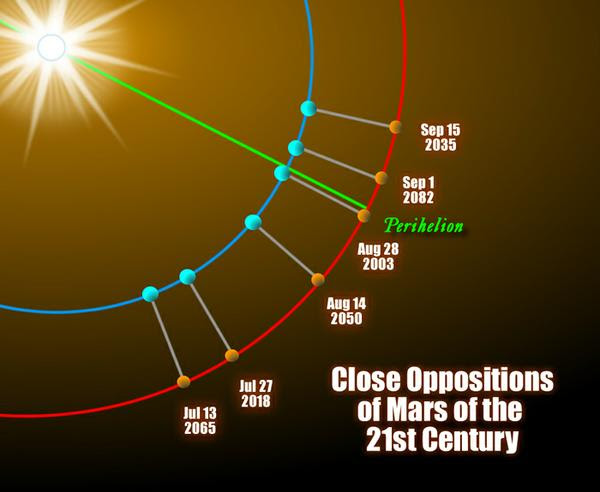Our universe provides many windows to show our place in our lives and the grand story of our family of all life on Earth. The glowing red eye of Mars, staring brightly at us now, is one of these. What do you think our world will look like in 2035, when Mars will do so again?
What’s that? Is it a plane coming in?
No, that’s the planet Mars! It not only looks cool now, but the orbits of our planets give it’s appearance spiritual significance to me. But first – you can see it too! It’s easy! Unlike some astronomical events (such as comet Neowise, the auroras, or the Perseid meteor shower), nearly anyone on our planet can be practically certain to see this (and share this joy with kids!), if you want to.
Super Easy to see!
To see it, simply go out on any clear night in the next week or two (Mars will fade only slowly, so it will nearly as bright for a good week or two, and still very clearly bright even a month from now, well into November). Once outside, and aware of which way is North, look for the blazingly bright, red “star” opposite the Sun – that’s Mars!
Being “opposite” the Sun makes it easy to find. Mars is now close to astronomical “opposition”. Opposition means that it’s literally in the opposite position in the sky compared to the Sun. Simply imagine a straight line starting at the Sun and going towards your head. Now continue that line through your skull, continuing for thousands of miles past you. That line now goes to Mars. So just after sunset, look for Mars to be rising in the East, just like the Sun did 12 hours ago. Mars will rise, putting it well over the South East horizon around 8 to 9 pm. As the night goes on, Mars will follow the path that the Sun took 12 hours earlier, putting it nearly overhead around 12 midnight, and then moving toward the Western horizon as dawn approaches, with Mars setting in the West around when the Sun rises in the East. Another way to think of this is to realize that Mars is in the same location the Sun was in 12 hours ago (or 12 hours in the future).
Who are those loved ones you can share this experience with – especially kids? It is, after all, very likely that you can find a clear night in the next couple weeks, and Mars is visible nearly the entire night. You don’t even need a very dark sky – with a magnitude of about -2.6, Mars now outshines everything in the night sky – the brightest stars and even Jupiter – except of course the Moon.
In the coming weeks, Mars will slowly slip away from opposition as it slowly fades in brightness, so the instructions above only work for times like now – not next year. Mars will vary in position and brightness, but won’t be very bright again until 2035.
 Another Signpost for our Lives, with Spiritual Impact for me
Another Signpost for our Lives, with Spiritual Impact for me
2035!?! What will my life be like in 2035? We can’t know. We can be sure that there will be people in our lives we don’t know yet, including people who don’t even exist yet. In 2035, a baby born this year will be around 15 years old, able to drive in many states and capable of discussion, games, etc. We can also be sure that some among us now will have died. For me, it’s very unlikely my elderly parents will still be alive. This is another reminder to treasure those moments with our loved ones. Indeed with all of them, as we don’t know what the next ~15 years will hold for any of them – and indeed, what it will hold for ourselves. Then my thoughts turn to 2050, and 2065, 2082, and on. I’ll probably be around for maybe 2 more appearances of the bright eye of Mars staring at us, but future generations are more important to me than my own short life. What world are we giving to the next 7+ generations with each choice we make?
As we’ll see below, this appearance of Mars marks out a regular occurrence every ~15 years – signposts that stretch both into the future and the past. What was your life like in 2003? Or 1988 (when I was in high school)? What were our Ancestors doing in those and times before those – struggle and work which allowed us to each exist? Farther back, long before lighted cities, our Ancestors certainly noticed that bright eye – and likely cared very much about it. Our Ancestors knew the skies, and in many cases, undoubtedly knew when Mars would be bright well in advance.

Mars gives us each an opportunity to revel in it’s beauty, and to chose for ourselves what significance we’ll see in it.
But Why ~15 Years?
One of the many joys of science is the fact that often, a general rule can be understood, and suddenly it can be applied to a huge range of situations, being just as true in Michigan as in Libya as on Jupiter or at Alpha Centauri. A relevant general rule for us here is that orbits work because the outward force from the speed of the body is balanced with the inward tug of gravity. Because gravity is stronger with a smaller distance (the inverse-square law), a body orbiting closer has to be moving faster to be in orbit.

This applies everywhere, and is why the length of a planet’s year (the time to go around the Sun once) is shortest for Mercury and longer the farther one goes out from the Sun (both because the path is shorter and because the speed is higher). For another example, look at things orbiting the Earth. The space station orbits quite close in – and it goes around the Earth once in just 90 minutes. geosynchronous satellites are farther out, and hence require 24 hours to orbit the Earth, while the Moon is farther still, and takes 28 days (670 hours). This also holds for distant star systems, etc. 

Because our solar system condensed from a cloud of dust (the remains of a previous supernova), all the planets rotate in a single plane, like tracks on a vinyl record or concentric circular racetracks, all going in the same direction (which is counterclockwise from the North side). With each planet going faster than those farther than it from the Sun, this means that a planet on an “inside track” (Earth) will start to “catch up to” any planet farter out from it (Mars), reach it’s closest approach, and then pass it, until the inner planet goes around the Sun again, “lapping” the outer planet. This give us the familiar “retrograde motion” of the planets, and is why Mars goes retrograde during our closest approach to Mars (Mars is now going retrograde, and will be doing so into November).
As we saw above, the Martian year is 1.88 years long – so it takes about two years for us to catch up to Mars, and go past it. But while we were going around our year, Mars also moved – so we “catch up” to Mars (and have the closest approach) at a different place than before, and hence a different day of the year. Here are the dates of Mars opposition from 1995 to 2037, from this site.
Here’s the funny thing that makes the 15 year thing possible: Like all the planet orbits, the orbit of Mars is not a perfect circle -it’s a little bit squished (oval). Further, the place on the orbit where it is closest to the Sun (called “perihelion”), of course marks a certain place in the disk of the solar system – so our (Earth) orbit will pass that place on the same date every year (because each trip around our orbit makes one year). That date happens to be August 25th. But why would the location (date) where we catch up to (and pass) Mars (opposition) be the same as when Mars is closest to the Sun (perihelion)? It isn’t the same (usually). In fact, it makes a second “cycle”, and so it takes about 15 years for opposition to “just happen” to line up near perihelion (for opposition to happen near August 25th) – and it will be until 2035 before it happens again!
Rituals and Altars

Though the closest approach of Mars was in 2018, this year is nearly as close, as the cycle starts again. How one might want to include this in rituals now, or on one’s altar, or otherwise, is up to you. I know that for me, in addition to these, I’ll also sometimes notice, when I hear that Mars is retrograde, or see it near opposition, how far we are from 2035, and remember seeing the close approaches in 2003 and 2018. I’ll probably remember the tumultuous year of 2020, just as I remember taking the opportunity in 2003 to observe Mars with my telescope, seeing the ice cap. Before that, I missed the two previous close approaches, being unaware of this aspect of our glorious Universe. In fact, due to a planetwide dust storm on Mars in 2018, this is actually a better time for seeing Martian surface features than in 2018.
However Mars touches your life, may your days be blessed.
Starstuff, Contemplating by Jon Cleland Host
We are assemblages of ancient atoms forged in stars – atoms organized by history to the point of consciousness, now able to contemplate this sacred Universe of which we are a tiny, but wondrous, part.

Dr. Jon Cleland Host is a scientist who earned his PhD in materials science at Northwestern University & has conducted research at Hemlock Semiconductor and Dow Corning since 1997. He holds eight patents and has authored over three dozen internal scientific papers and eleven papers for peer-reviewed scientific journals, including the journal Nature. He has taught classes on biology, math, chemistry, physics and general science at Delta College and Saginaw Valley State University. Jon grew up near Pontiac, and has been building a reality-based spirituality for over 30 years, first as a Catholic and now as a Unitarian Universalist, including collaborating with Michael Dowd and Connie Barlow to spread the awe and wonder of the Great Story of our Universe (see www.thegreatstory.org, and the blog at evolutionarytimes.org). Jon and his wife have four sons, whom they embrace within a Universe-centered, Pagan, family spirituality. He currently moderates the yahoo group Naturalistic Paganism.
Heather is a parent and a scientist raising her four children to explore the world through scientific understanding and with spiritual appreciation of the Universe. She has a Master of Science degree in Physics from Michigan State University, a Bachelor of Science degree in Aerospace Engineering from the University of Michigan, and a Bachelor of the Arts degree in English Literature, also from the University of Michigan. She teaches physics as an adjunct instructor at Delta College, runs the Math Mania program at a local elementary school, has worked at Dow Corning as an engineer and at NASA as an intern, and she has led science outreach workshops for K-12 students through joint programs between NASA and the University of Michigan. She is a naturalistic non-theist, whose faith has been shaped by her childhood within the Episcopal Church, her adult membership in the Unitarian Universalist church, and through Buddhist meditation. She has a passion for bringing science and spirituality to everyone in a fun way, both for her own family and for the wider community of the Earth. She is a co-author with Jon Cleland-Host of Elemental Birthdays: How to Bring Science into Every Party.
 Naturalistic Paganism
Naturalistic Paganism

